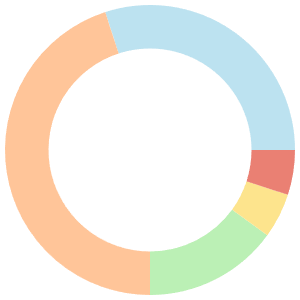Dairy-free meal plan for elimination diet
Explore dietary sensitivities with the Dairy-Free Meal Plan for Elimination Diet. This plan starts with a range of dairy-free meals, including plant-based milks and cheeses, along with a variety of other whole foods. Gradually, other potential irritants are reintroduced, allowing for careful observation of the body's reactions. Each meal is designed to be nourishing and satisfying, providing a thoughtful approach to identifying food sensitivities in a dairy-free context.




Meal plan grocery list
- Oatmeal
- Bananas
- Honey
- Grilled chicken breast
- Quinoa
- Mixed vegetables (steamed)
- Fresh fruit salad ingredients
- Salmon
- Sweet potatoes
- Green beans
- Spinach
- Almond milk
- Frozen berries
- Flaxseeds
- Black beans
- Bell peppers
- Small apple
- Almond butter
- Tofu
- Brown rice
- Chia seeds
- Coconut milk
- Mango
- Lentil soup
- Kale
- Gluten-free whole grain bread
- Greek yogurt alternative
- Brussels sprouts
- Gluten-free toast
- Fortified orange juice

Article Reviewed
Meal plan overview
The Dairy-Free Meal Plan for Elimination Diet is a strategic approach to uncovering food sensitivities, beginning with the exclusion of dairy. It includes a variety of dairy-free foods, gradually reintroducing different food groups to identify potential allergens or irritants.
This plan offers a systematic and insightful way to approach an elimination diet, focusing on dairy-free alternatives and a wide range of other nutrient-rich foods for a comprehensive dietary exploration.

Foods to eat
- Whole Foods: Focus on unprocessed meats, fruits, vegetables, and grains that are naturally dairy-free.
- Lean Proteins: Chicken, fish, turkey, and legumes (check for non-dairy labeling).
- Gluten-Free Grains: Rice, quinoa, and certified gluten-free oats.
- Vegetables: A wide variety, fresh or frozen, without creamy sauces.
- Fruits: All types, fresh, dried, or canned in juice.
- Plant-Based Milks: Almond, soy, coconut, or rice milk.
- Healthy Fats: Olive oil, avocado, and coconut oil.
✅ Tip
Try using nutritional yeast as a dairy-free cheese substitute to add flavor to your meals.
Foods not to eat
- Dairy Products: Milk, cheese, yogurt, and butter.
- Processed Foods: Often contain hidden dairy ingredients.
- Some Non-Dairy Alternatives: Check for additives and gums if these are being eliminated.
- Flavored and Processed Snacks: Can contain dairy derivatives like whey or casein.
- Pre-Packaged Meals: May contain dairy ingredients.
- Certain Baked Goods: Often made with butter, milk, or whey.
Main benefits
The Dairy-Free Meal Plan for Elimination Diet is tailored for identifying potential dairy intolerances or allergies. It focuses on eliminating all dairy products while providing balanced nutrition from fruits, vegetables, grains, meats, and plant-based dairy alternatives.

Fat
Carbs
Protein
Fiber
Other
How to budget on this meal plan
Oatmeal, bananas, and honey are great for breakfast and can be bought in bulk. Grilled chicken breast and quinoa are staples that can be more economical in larger sizes. Utilize a variety of vegetables like mixed greens, bell peppers, and small apples in meals. Homemade Greek yogurt alternative and fresh fruit salad can be cheaper and healthier alternatives to store-bought versions. Consider making your own dairy-free pancakes and using almond butter as a nutritious spread.
Download the grocery list FREE
- Add & remove items
- Sort items by store aisles
- Share the list with others

Extra tips ✨
Any healthy snack ideas?
These dairy-free snacks are ideal for an elimination diet:
- Fruit salad with a variety of fresh fruits
- Gluten-free rice cakes with avocado
- Baked sweet potato chips
- Homemade popcorn without butter
- Carrot and cucumber sticks with hummus
- Roasted chickpeas
- Fresh berries with coconut yogurt
What should I drink on this meal plan?
For a dairy-free elimination diet, it's crucial to have beverages that support detox and are allergen-free. Consider herbal teas for their cleansing properties, green tea for antioxidants, fresh vegetable juices for vitamins and minerals, coconut water for hydration, and bone broth for gut healing.
How to get even more nutrients?
An elimination diet helps identify food sensitivities. On a dairy-free elimination diet, it's important to replace the proteins and calcium typically obtained from dairy. Incorporate almond milk or fortified soy milk, which offer calcium and vitamins. Add beans and lentils to your meals; they are good sources of protein and fiber, helping to keep your digestive system running smoothly.
Meal plan suggestions
Dairy-Free Meal Plan for Elimination Diet
Day 1
- Breakfast: Oatmeal with sliced banana and a drizzle of honey (calories: 300, protein: 6g, carbs: 55g, fat: 5g)
- Lunch: Grilled chicken breast with quinoa and steamed mixed vegetables (calories: 400, protein: 30g, carbs: 40g, fat: 10g)
- Snack: Fresh fruit salad (calories: 150, protein: 2g, carbs: 35g, fat: 1g)
- Dinner: Baked salmon with roasted sweet potatoes and green beans (calories: 500, protein: 35g, carbs: 40g, fat: 20g)
Day 2
- Breakfast: Smoothie with spinach, almond milk, frozen berries, and flaxseeds (calories: 250, protein: 5g, carbs: 40g, fat: 7g)
- Lunch: Quinoa and black bean stuffed bell peppers with a side salad (calories: 450, protein: 15g, carbs: 60g, fat: 15g)
- Snack: A small apple with almond butter (calories: 200, protein: 4g, carbs: 30g, fat: 10g)
- Dinner: Stir-fried tofu with mixed vegetables over brown rice (calories: 450, protein: 18g, carbs: 65g, fat: 10g)
Day 3
- Breakfast: Chia seed pudding made with coconut milk and topped with mango (calories: 350, protein: 6g, carbs: 35g, fat: 20g)
- Lunch: Lentil soup with a side of steamed kale and gluten-free whole grain bread (calories: 350, protein: 18g, carbs: 40g, fat: 10g)
- Snack: Greek yogurt alternative with a handful of berries (calories: 150, protein: 10g, carbs: 15g, fat: 5g)
- Dinner: Baked chicken thighs with Brussels sprouts and sweet potato (calories: 500, protein: 35g, carbs: 40g, fat: 20g)
Day 4
- Breakfast: Gluten-free toast with avocado and a side of fortied orange juice (calories: 350, protein: 6g, carbs: 40g, fat: 18g)
- Lunch: Chickpea salad with cucumbers, tomatoes, and a lemon-tahini dressing (calories: 400, protein: 15g, carbs: 45g, fat: 20g)
- Snack: Rice cakes with peanut butter (calories: 250, protein: 8g, carbs: 30g, fat: 12g)
- Dinner: Cauliflower steak with a side of roasted Brussels sprouts (calories: 300, protein: 10g, carbs: 35g, fat: 15g)
Day 5
- Breakfast: Berry and spinach smoothie with almond milk and flaxseeds (calories: 280, protein: 5g, carbs: 45g, fat: 8g)
- Lunch: Stuffed bell peppers with quinoa, black beans, and vegetables (calories: 350, protein: 12g, carbs: 55g, fat: 8g)
- Snack: A small pear and a handful of almonds (calories: 200, protein: 4g, carbs: 25g, fat: 12g)
- Dinner: Vegan curry with mixed vegetables, served over brown rice (calories: 450, protein: 12g, carbs: 70g, fat: 12g)
Day 6
- Breakfast: Overnight oats with almond milk, peanut butter, and sliced strawberries (calories: 350, protein: 10g, carbs: 50g, fat: 12g)
- Lunch: Vegan wrap with hummus, grated carrots, and mixed greens (calories: 400, protein: 12g, carbs: 50g, fat: 18g)
- Snack: Edamame pods (calories: 150, protein: 12g, carbs: 10g, fat: 6g)
- Dinner: Vegan chili with kidney beans, lentils, and tomatoes (calories: 400, protein: 20g, carbs: 60g, fat: 10g)
Day 7
- Breakfast: Gluten-free vegan pancakes with a side of fresh fruit (calories: 350, protein: 5g, carbs: 60g, fat: 10g)
- Lunch: Roasted vegetable and quinoa bowl with a lemon vinaigrette (calories: 450, protein: 15g, carbs: 65g, fat: 15g)
- Snack: Baked kale chips (calories: 100, protein: 3g, carbs: 15g, fat: 4g)
- Dinner: Stuffed acorn squash with a mixture of wild rice, cranberries, and walnuts (calories: 400, protein: 8g, carbs: 70g, fat: 10g)
Download the FREE grocery list for this meal plan
Get grocery list
Want to learn more?
⚠️ Keep in Mind
As with any dietary change, it is recommended to consult with a healthcare professional or registered dietitian before changing your dietary habits.




